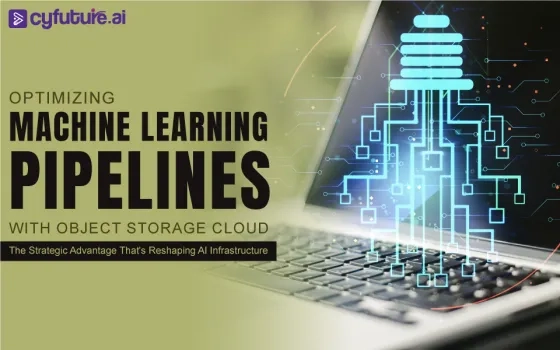In today's fast-paced engineering landscape, PLM (Product Lifecycle Management) plays a crucial role in managing the entire lifecycle of a product from its inception moving through design and manufacturing all the way to service, and disposal. PLM is now the definitive single source of truth for all product development data for engineering teams. Traditionally PLM systems have been deployed on premises similar to other large enterprise applications. Many engineering teams are accustomed to this setup. However, with the rapid adoption of cloud technology across industries, it is evident that Cloud PLM isn’t just a novel approach but a necessity for engineering teams to stay competitive and agile.
The Cloud Revolution: Enhancing Collaboration and Efficiency:
The rapid revolution of IT infrastructure, driven by cloud technology adoption, is boosting flexibility, scalability, and efficiency across industries. Improved collaboration and accessibility are key drivers, enabling global teams in logistics, manufacturing, and healthcare to work together in real-time and support remote work. The flexibility and scalability of cloud services, with pay-as-you-go models and rapid deployment cycles, are particularly beneficial for industries with fluctuating workloads, such as retail and finance. Additionally, cloud platforms offer advanced features like robust data management, analytics capabilities, and security measures, which are crucial for industries handling sensitive data like finance and healthcare.
Business challenges that evolved post-COVID resulted in more companies taking to cloud adoption, placing workloads around CRM (Customer Relationship Management) applications and SCM (Supply Chain Management) on the Cloud along with collaboration & communication tools like CCaaS; data analytics + business intelligence moving swiftly into GCP/AWS or MS Azure while HR is trailing behind though steadily migrating from their myHR desktops. This change enables greater customer engagement, streamlines supply chains, enhances teamwork, delivers real-time insights and supports talent management. These innovations allow companies to remain focused on innovation instead of having the added overhead around cost management, and regulatory compliance.
Cloud PLM: The Future of Product Lifecycle Management:
Despite the comfort and familiarity of on-premises PLM systems, the benefits of transitioning to Cloud PLM are too significant to ignore. Cloud PLM systems streamline workflows, enhance collaboration, and ensure data integrity across various stages of product development. They serve as a single source of truth for all product development-related data, which is crucial for innovation and maintaining a competitive edge.
- 28% respondents have migrated to Cloud PLM
- Another 10% have picked a Cloud PLM, and are implementing
- 38% respondents are looking at moving to cloud, and are investigating internally
Current state of Cloud-PLM Adoption:
In a 2021 study, CIM data found that about 28% of the companies surveyed had adopted cloud PLM, while 72% were still On-Premises. Out of the 72% On-Premises respondents, 66% had considered moving to cloud, and had done some internal studies etc. and out of these, about 22% had selected a cloud PLM partner.
This clearly indicates that Cloud adoption for PLM is gaining momentum. However, companies are also being cautious and investing more time and resources to define their cloud strategies for PLM.
Drivers for PLM Cloud Adoption:
- Ageing Infrastructure: The on-prem infrastructure needs to be upgraded regularly owing to technological advances and compatibility with the changing tool capabilities. Hence, along with the upfront cost incurred while commissioning the infrastructure, companies must keep investing to support the infrastructure.
- Operational Complexity: Depending on the type of cloud deployment, IT teams will still need to invest time and energy in maintaining the cloud infrastructure. With the complex on-prem infrastructure, IT teams need to develop expertise in both cloud and on-premises technologies, manage diverse environments, and handle the increased administrative overhead. Dealing with multiple vendors for cloud and on-premises solutions can complicate support and contract management. Ensuring that vendors work together seamlessly and that service levels are met requires careful coordination.
- Integration Challenges: Companies have begun to unleash the power of data stored in different siloed systems through Digital Threads, to derive meaningful insights throughout the product lifecycle. One of the essential elements of digital threads is integrating diverse systems to tap the data contained in them. Ensuring seamless integration between cloud and on-premises systems is complex. Differences in architectures, protocols, and data formats can lead to integration issues, making it difficult to achieve a unified view of data and operations. Maintaining consistent and synchronized data between cloud and on-premises systems is challenging. Inconsistent data can lead to errors, inefficiencies, and decision-making based on outdated or incorrect information.
On Prem Comfort - Understanding Engineering Teams' Hesitation Towards Cloud PLM Migration:
Engineering data plays a pivotal role in companies, covering everything from CAD models and simulations to technical documentation and design changes., This information is vital for product development, driving innovation, and keeping a competitive edge. When engineering data is accurate and easy to access, it leads to high-quality products, streamlined workflows, and better decision-making.
For years, companies have operated an on-Premises PLM, which have become finely tuned to their needs. Engineering teams often resist cloud migration due to concerns about data security, potential workflow disruptions, and the complexities involved in integrating cloud solutions with legacy systems. Here are few more reasons for resisting a Cloud PLM adoption
- Data security and privacy:
- Sensitive information: Engineering teams often handle proprietary and sensitive data related to product designs and intellectual property. There’s a fear that storing this data in the cloud increases the risk of unauthorized access, breaches, or leaks.
- Compliance Requirements: Several industries have strict regulatory requirements for data security and privacy. Ensuring that cloud providers meet these standards can be challenging and a source of concern.
- Performance and Reliability:
- Latency and Speed: Cloud-based solutions might introduce latency or performance issues, particularly for teams working with large CAD / CAE files or complex simulations.
- Internet Dependency: Relying on a stable and fast internet connection for accessing the cloud-based PLM can be a concern, especially in regions with unreliable connectivity. This reliance on the internet service provider could impact daily operations if the entire infrastructure is migrated to the cloud.
- Complex IT Ecosystems: Engineering teams typically use a variety of tools and systems that are integrated with their existing on-premises PLM. Migrating to the cloud may require significant changes to these integrations, potentially causing disruptions. Ensuring compatibility between the new cloud-based PLM system and existing tools and workflows can be complex and resource-intensive.
- Data Migration: Migrating large volumes of data without losing data integrity is challenging. The data migration process itself is often complex and resource intensive, requiring careful planning and execution by a skilled team.
- Control and Customization:
- Vendor Lock-in: Migration to cloud is a long-term commitment, and not easily reversible. Moreover, changing the cloud vendor later on can incur extra costs and downtime, making engineering teams mindful of the long-term commitment required.
- Control Over Data: Engineering teams are often uncomfortable with the idea of their critical data being managed by a third party, potentially leading to concerns about data sovereignty and control.
- Customization Limitations: Cloud PLM solutions may not offer the same level of customization as on-premises solutions, limiting the ability of teams to tailor the system to their specific needs.
The Strategic Imperative of Cloud PLM:
With the rapid advent of technology, adopting Cloud-PLM has become a strategic imperative. Cloud-PLM offers unparalleled benefits by integrating advanced technologies and fostering seamless collaboration, enabling companies to innovate faster and more efficiently. Below are key reasons why cloud-PLM is essential for modern enterprises:
- Unified Digital Threads: Cloud-PLM creates continuous digital threads that connect all phases of the product lifecycle, from concept to service. This ensures real-time data accessibility and traceability, enhancing collaboration and reducing errors across teams and processes. With a unified digital thread in the cloud, all stakeholders have access to the latest data, leading to more accurate decision-making and streamlined operations.
- Integrated Digital Twins and Device Data: Incorporating data from devices and digital twins into cloud-PLM systems enables comprehensive, data-driven decision-making in product development. This integration improves predictive maintenance, enhances product quality, and optimizes performance by leveraging real-time operational insights. Cloud PLM platforms facilitate the seamless integration of digital twin data, making it easier to analyse and apply insights across the product lifecycle.
- Advanced MBSE (Model Based Systems Engineering) and System Modelling Workbench: Cloud-based MBSE platforms provide a cohesive environment for designing and simulating complex systems. This unified workbench enhances cross-disciplinary collaboration, ensuring consistency and accelerating development cycles. Cloud PLM allows for real-time updates and collaboration, making MBSE more efficient and reducing the time needed for system modelling and validation.
- Closed Loop PLM-SLM Integration: Cloud-PLM facilitates seamless integration between PLM and SLM (Service Lifecycle Management). Advanced AI tools can be readily leveraged from cloud to gain meaningful insights to the service data. This closed loop feedback system ensures continuous improvement by incorporating insights from service data into product design, leading to higher customer satisfaction and product reliability. Cloud PLM makes it easier to collect and analyse service data, ensuring that feedback is promptly incorporated into new product designs.
- Scalable High-Performance Computing (HPC): Flexible cloud-based HPC capabilities allow companies to scale computing resources on-demand, supporting intensive simulations and complex calculations. This scalability eliminates the need for significant capital investment in on-premises hardware, providing cost-effective computational power. Cloud PLM ensures that engineering teams can access the required high-performance computing resources as needed, without the delays and costs associated with on-premises hardware upgrades.
- AI/ML-Powered Solutions: Cloud-PLM can leverage AI and ML-based solvers to revolutionize problem-solving and computation. These advanced tools enable faster simulations, results that are remarkably close to physics-based simulations, and innovative design solutions, driving smarter decision-making and faster innovation. Cloud platforms can easily integrate AI/ML capabilities, making them more accessible and affordable for engineering teams.
- Streamlined IT Infrastructure: Migrating to cloud-PLM reduces IT infrastructure complexity and diversity, enabling companies to consolidate systems and focus more on innovation. This streamlining decrease maintenance burdens, improves resource allocation, and enhances operational efficiency. Cloud PLM reduces the need for extensive on-premises IT infrastructure, lowering costs and freeing up resources for innovation.
- Enhanced Collaboration for Distributed Teams: Cloud-PLM supports distributed teams and an extensive network of suppliers and partners by providing a central, accessible platform. Advanced security features like MFA on the cloud will ensure data security and confidentiality. This fosters better communication, collaboration, and integration across global teams, accelerating development processes and enhancing project outcomes. Cloud PLM enables real-time collaboration, ensuring that all team members, regardless of location, have access to the latest data and can collaborate effectively.
Conclusion: Embrace the Future:
In conclusion, the shift to Cloud PLM is not just a trend; it’s a strategic necessity for modern enterprises. Engineering teams must embrace this transformation to remain competitive, agile, and innovative. The time to act is now! By transitioning to Cloud PLM, companies can unlock unprecedented potential, drive smarter decision-making, and foster seamless collaboration across distributed teams.
It’s time to leave behind the constraints of traditional on-premises PLM systems and embrace the future of engineering with Cloud PLM. Are you ready to make the leap?















